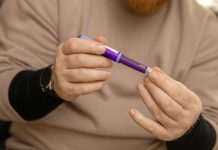
A new study conducted by Dr. Jeroen van der Velde and his team at the Department of Clinical Epidemiology, Leiden University Medical Center, Netherlands, has found that engaging in physical activity during the afternoon or evening is associated with better blood sugar control.
In contrast, morning exercises didn’t show any such advantages.
Link Between Sedentary Behavior and Health Risks
The rise in global obesity can be attributed, in part, to prolonged sitting and lack of physical activity. This sedentary behavior has been associated with increased risks for metabolic diseases, including type 2 diabetes (T2D).
Earlier studies have shown that taking short breaks from being sedentary has positive effects on cardiometabolic health.
Such breaks result in better blood sugar profiles, as shown by decreased blood glucose and triacylglycerol levels.
Insulin resistance is closely linked to fat concentrations in the liver. Regular exercise has proven effective in reducing liver fat and improving insulin sensitivity.
The researchers hypothesized that periodic breaks from sedentary behavior can lower liver fat, thereby reducing insulin resistance and lowering the risk of T2D.
Study Design and Findings
Data from the Netherlands Epidemiology of Obesity (NEO) study, involving 6,671 individuals aged between 45 and 65, was utilized.
The study aimed to understand the connections between the timing of physical activity, breaks in sedentary time, liver fat content, and insulin resistance.
The researchers divided the day into three blocks (morning, afternoon, and evening) and classified participants based on when they engaged in the most physical activity.
The main findings from the study were:
Physical activity during the afternoon or evening was associated with reduced insulin resistance by 18% and 25% respectively compared to evenly distributed activity throughout the day.
Morning activity didn’t significantly differ in its effects on insulin resistance when compared to evenly distributed activity.
There wasn’t any observed link between sedentary breaks and reduced insulin resistance, possibly because the activity during these breaks was too light to trigger metabolic responses.
Potential Mechanisms
The exact mechanisms behind the benefits of afternoon or evening physical activity remain elusive.
However, previous research indicates that metabolic responses to high-intensity exercise vary based on when the exercise occurs.
Muscle strength and metabolic functions of skeletal muscle cells peak in the late afternoon, which might make afternoon exercises more metabolically effective than morning routines.
Conclusions
While the total amount of daily moderate-to-vigorous physical activity (MVPA) is vital, the timing of this activity also plays a crucial role in managing insulin resistance.
Engaging in physical activity during the afternoon or evening is linked to up to a 25% reduction in insulin resistance compared to even distribution of activity during the day.
Further research is needed to determine if the timing of physical activity influences the onset of type 2 diabetes.
If you care about blood sugar, please read studies about why blood sugar is high in the morning, and how to cook sweet potatoes without increasing blood sugar.
For more information about brain health, please see recent studies about 9 unhealthy habits that damage your brain, and results showing this stuff in cannabis may protect aging brain, treat Alzheimer’s.
The research findings can be found in Diabetologia.
Follow us on Twitter for more articles about this topic.
Copyright © 2023 Knowridge Science Report. All rights reserved.



